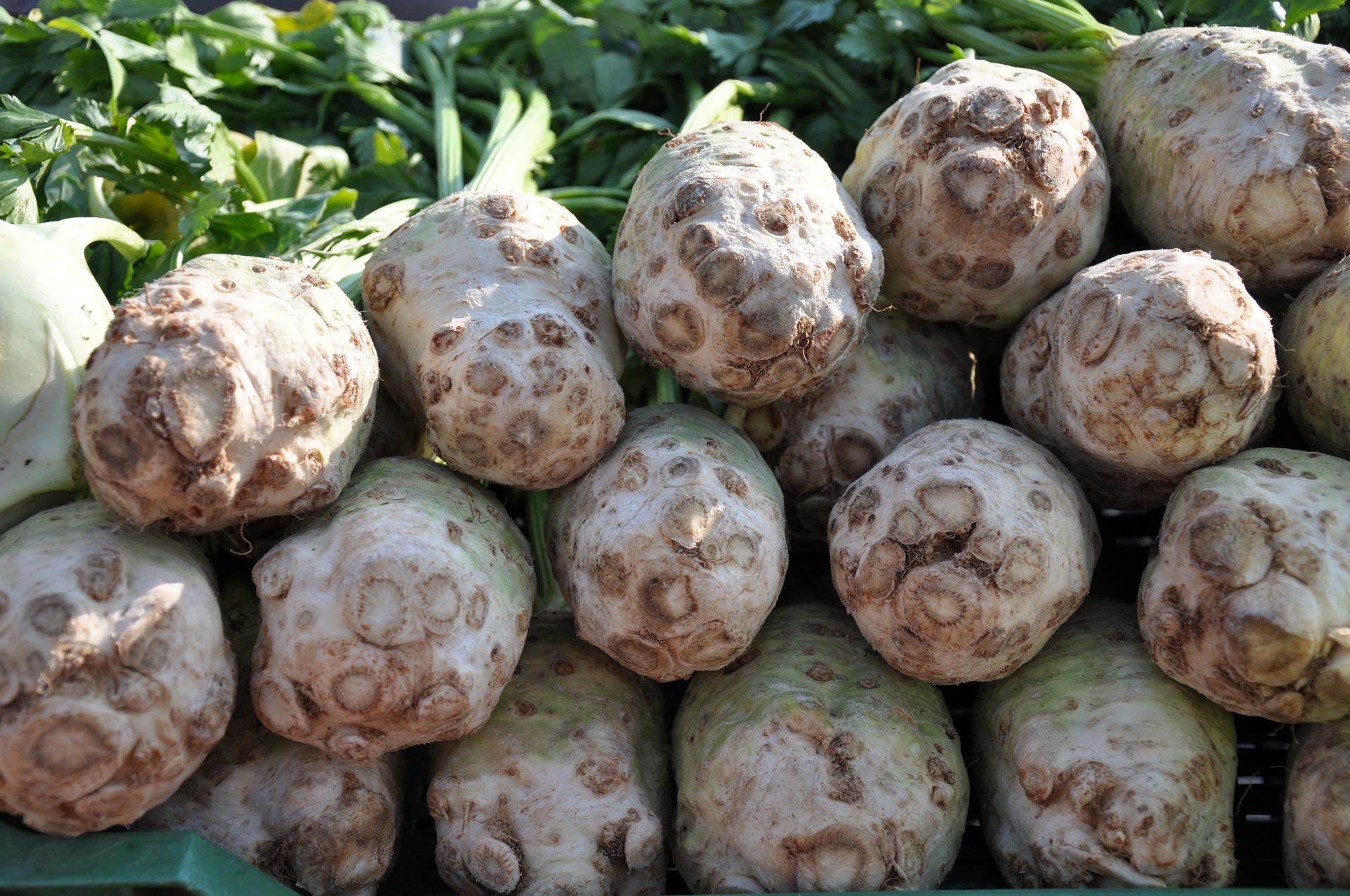Pests that occur in celery production are divided into soil pests and above-ground pests.
Soil pests: grubs, wireworms, cutworms, centipedes.
Above-ground pests: Swallowtail butterfly (Papilio machaon L.), caraway moth, aphids, carrot fly (Psila rosae), false carrot fly (Phytomyza lateralis Fali.), leaf-mining flies.
Swallowtail Butterfly
The adult has yellow forewings with a broad black border. The hindwings are elongated into a dark tail. With a wingspan of 7.5 cm, it is one of the largest European butterflies. Females lay eggs exclusively on plants from the Apiaceae family, which the caterpillars feed on. The Swallowtail caterpillar initially resembles bird droppings as a protective adaptation against predators; later, it becomes green with black and orange markings. Additionally, glands on the head release an unpleasant smell (resembling musk) when disturbed.
False Carrot Fly (Phytomyza lateralis Fali.)
This pest bores tunnels in the roots of carrots and celery.
Carrot Fly (Psila rosae)
The carrot fly is the most important pest of carrots in our area. It also attacks other vegetables: celery, parsnip, parsley, caraway, and dill, with noted damage to beets and brassicas. It frequently appears in large numbers in some regions. Besides direct damage in the form of holes or tunnels filled with excrement visible on carrot roots, there are also qualitative changes. Carrots infested with larvae have a bad odor and bitter taste, making them unsuitable for use. Such carrots are prone to rot and decay. Plants attacked by carrot fly are easily recognized by their purple leaves, which later turn yellow and dry up.
Appearance of the Pest
The body of the carrot fly is black, the head is brown, the legs are yellow-brown, and it is 4-5 mm long. Eggs are elongated and dirty white. The larvae are milky white, 6-8 mm long, narrower at the front and wider at the rear.
Biology of the Pest
The carrot fly has two generations per year. The first generation appears in early May and June, and the second in July. The second generation is usually more numerous and harmful than the first. It overwinters in the pupal stage in a barrel-shaped cocoon in the soil or in the larval stage in carrot roots in the garden or storage. Egg-laying begins at the end of May. The female lays eggs individually or in groups at the base of the carrot root or in the soil around it. One female lays about 100 eggs. Flies prefer to lay eggs in moist, sheltered, and shady areas around houses, heavily weeded areas, and around bushes and shrubs. Loose soil is favorable for egg-laying. After hatching, the larvae bore into the carrot, typically at the top of the root in young plants and at any part in older plants. Larvae bore tunnels of varying sizes depending on their stage.
After 3-6 weeks, they complete their development, leave the carrot root, and pupate in the soil. Most larvae remain in the soil after harvesting carrots, while a smaller number produce a second generation. The emergence rate of flies largely depends on soil temperature and moisture. Larvae of the second generation cause damage from August to September, often on the same carrots attacked by the first generation larvae. Most individuals of the second generation overwinter in the larval stage in the plants in the field or storage, while a smaller portion pupates in the soil. Damage can be reduced by practicing wider crop rotation, where carrots are sown on the same surface only every fourth year. Infestation is weaker when carrots are grown in well-ventilated positions. Damage is also reduced by early or very late sowing of carrots. Since loose, friable soil favors egg-laying and infestation, it is advisable to compact the soil around carrots to prevent cracks suitable for egg-laying. Sowing onions between carrot rows repels flies with its scent. Reducing infestation sources by destroying wild plant species from the Apiaceae family within a 1 km radius and ensuring newly sown areas are far from last year’s infested areas can also help. All plants showing symptoms of carrot fly attack should be removed and destroyed as soon as possible.
On small areas, covering crops with nets provides successful protection. Chemical control should be carried out with granular insecticides, which can be applied preventively before sowing, in rows simultaneously with sowing, or after emergence with incorporation. The entire surface or strips along the seed can be sprayed before sowing with the incorporation of similar products.Young plants can be protected by watering or spraying during pest oviposition periods with insecticides. When watering, at least 0.5 liters per linear row of plants should be used. Spraying is effective only if done in periods based on monitoring fly activity. Prescribed waiting periods may limit the use of some insecticides at certain application times.













































